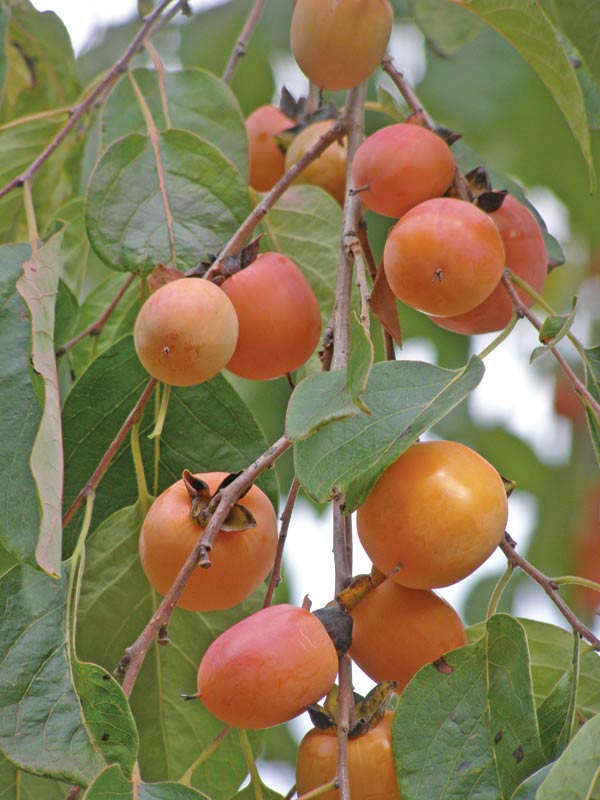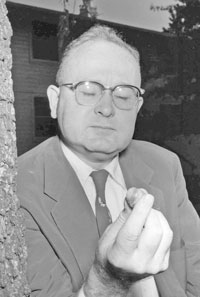Persimmon season

An unusually heavy fruiting Persimmon Tree in the middle of Chapel Hill. Photo by Ken Moore
By Ken Moore
Flora Columnist
A desperate call two weeks ago: “Ken, that persimmon tree near my office is already dropping fruit and I’m leaving for a couple of days and don’t want them to go to waste!†I assured him I would collect those ‘simmons during his absence. We shared mutual curiosity that the ripe persimmons were dropping before the first frosts this year. So, it must be shorter days rather than frigid nights that trigger fruit ripening.
Across town, my favorite persimmon tree (Diospyros virginiana) is loaded with fruit again this year. But, wow, when I arrived at the base of my friend’s favorite tree, I was stopped in my tracks. The persimmons on his tree hung like clusters of giant grapes.
It was the Wednesday afternoon of UNC fall break and I anticipated being alone. I found several grounds crew members working nearby and they called over to me that they also had claim to some of those fruit on the ground. A few minutes later, a car pulls up and out steps another friend, who for years has been visiting this tree during ’simmon season. It seems this particular tree has more than one watchful guardian.
Most folks use the persimmon pulp for pudding and bread recipes. I simply enjoy the fruit by plucking a ripe one (you’ll never put an unripened one in your mouth a second time!) to enjoy that cinnamon colored pulp while being careful not to swallow the five flat, long-oval, dark-brown seeds. Save the seeds to take home and plant in the ground where you want your very own persimmon trees. Be certain you plant several seeds some feet apart, for you need both a male and female plant to have your very own fruit-producing tree.
Persimmons are legendary in our area. You’ll enjoy reading more in “Who’s Gonna Cover ‘Em Up?!†Chapel Hill Uncovered – 1950-1985, written by Roland Giduz, a local legend himself. Next time you see him volunteering at the information tent at our Farmers’ Market, ask him for a persimmon recipe and I suspect he’ll have a persimmon story or two to share.
In the late 1950s, Roland described UNC News Bureau Director Pete Ivey’s enthusiasm for persimmons in the old Chapel Hill Newspaper. Over the years, Persimmon Pete, the self proclaimed “patron saint of persimmonry,†made the sharing of his persimmon recipes a cherished tradition.
Following Ivey’s death, Giduz carried on the persimmonry tradition for a time, going so far as to initiate a campaign to have the persimmon declared the state fruit. Sadly, not enough enthusiasts gathered around that cause. The scuppernong grape (Vitus rotundifolia) was declared the official state fruit in 2001.
Since the scuppernong is a vine, perhaps we can pick up the torch and lobby for the persimmon to become our official state fruit tree.
In the meantime, you had better get out there, find yourself a persimmon tree and make daily visits to collect those ripened fruits on the ground before the possums and other critters beat you to it.
Email Ken Moore at flora@carrborocitizen.com. Find previous Ken Moore Citizen columns at The Annotated Flora (carrborocitizen.com/flora).



Comments are closed.